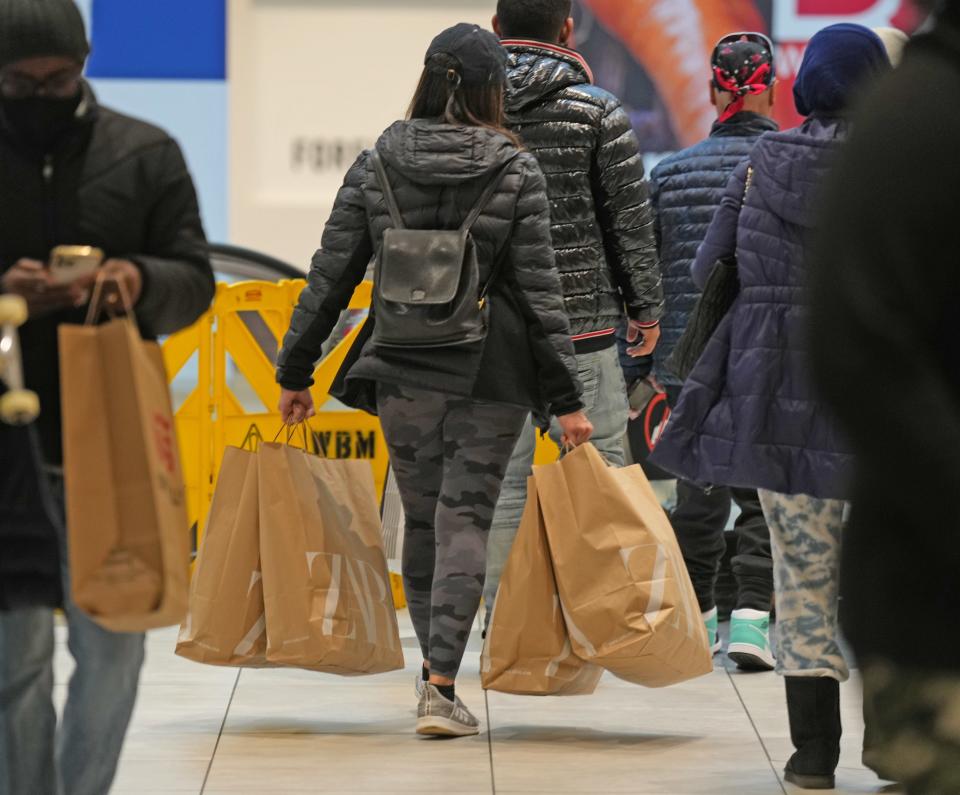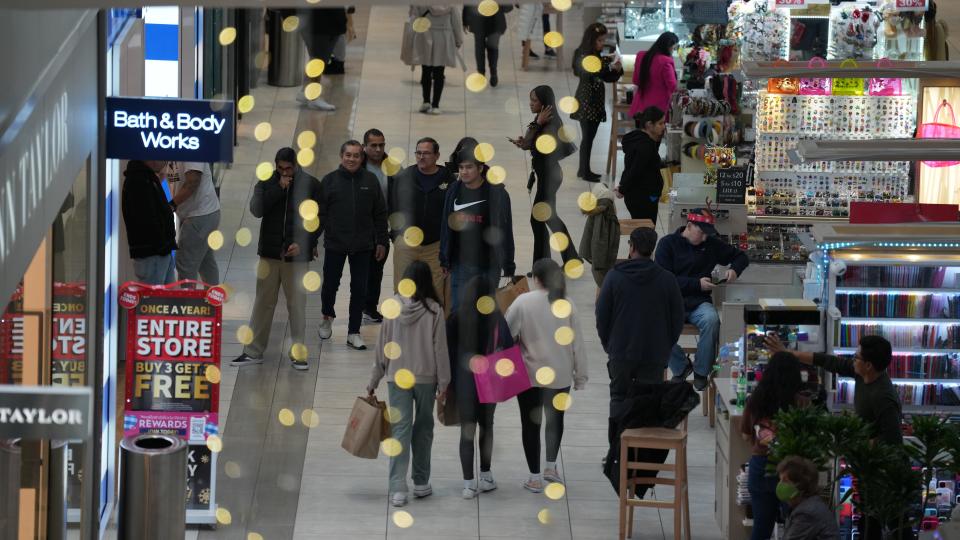A day of shopping now, Black Friday was at one time associated with JFK's death
- Oops!Something went wrong.Please try again later.
Black Friday, now solidified as the day after Thanksgiving, has grown into one of the busiest shopping days of the year.
Stores across the United States lure shoppers and compete with one another by offering limited-time sales on just about anything. For hundreds of years, however, Black Friday was something altogether different.
Sixty years ago, the term was used to describe the Friday before Thanksgiving 1963, the day President John F. Kennedy was shot and killed. It was not a day for shopping.
"At Bergen Mall, where a crowd of more than 5,000 welcomed him to the state's Republican stronghold [in September 1960], shoppers deserted the stores within a half-hour after the news was announced over the public address system," The Record's then-political reporter Robert Comstock wrote. "The reaction was the same at the other shopping centers and main streets across the state where his appearances had inspired crowd reactions unlike those which greeted any other candidate in history."

Kennedy had visited New Jersey as a candidate and three times as president. The last came at Newark's 1962 Columbus Day parade, where he first boasted of an alleged Venetian ancestry to the predominantly Italian American crowd of 10,000.
It was after Kennedy's death that the term Black Friday began to be associated with crowds of holiday shoppers. Before it was adopted by retailers in the mid-1980s, traffic officials in New York City reserved the term for the Friday of the next-to-last weekend before Christmas. The final pre-Christmas payday in the early 1980s was dubbed the city's worst traffic day, as nearly 1 million cars would enter lower and midtown Manhattan. The load was about 140,000 more than usual.
Black Friday: Is the tradition of in-person Black Friday shopping dying? It's complicated
More: Tell us how you do your holiday shopping!
In Philadelphia, however, Black Friday was the day after Thanksgiving. In the late 1960s, city newspapers reported that the term was being used by local police assigned to control traffic amid the post-Thanksgiving sales that became popular in the 1950s and '60s. On the post-holiday Friday in 1967, more than 200 law enforcement officials were assigned to the Philadelphia city center to manage an estimated 1 million shoppers, according to local newspaper reports.
Though the connotation remained negative, retailers in the 1980s put a positive spin on Black Friday. It was the start of the holiday shopping period and the catalyst for profits that would send businesses into the black.

It was first used to describe the post-Thanksgiving Friday by a columnist for The Record in 1985, when Leonard Reed called it lowercase "black Friday." Then, the Friday after Thanksgiving was better known locally as the day when Fountains of Wayne would put up its animatronic Santa display.
The term "Black Friday" was then mostly reserved for a Friday the 13th or other ominous Fridays — as it had been for centuries. It was applied to various gloomy week-ending events from corporate layoffs to heavy losses by baseball teams. Earlier it was often used to describe mass hangings of criminals. But even among those dark days were particularly notorious Black Fridays.
The one that started it all came in 1688 England, when seven Church of England bishops were charged with libel and locked up in the Tower of London for opposing the imposition of new religious freedoms. The term popped up in England again in 1745, after the invading Jacobites began their retreat to Scotland. The Jacobites and Charles Edward Stuart had attempted to regain the British throne for Stuart's father before turning around at Derby with the French on the brink of invading England from the south.
After that, Black Fridays periodically surfaced after upheavals in the banking industry. There was the 1866 failure of Overend, Gurney and Co. in London. The bank's liquidation triggered an international lending crisis and financial collapse.
In 1869, Black Friday came stateside through the Fisk-Gould scandal. Gold speculators on Wall Street conspired to run up the price of the precious metal before President Ulysses S. Grant ordered the sale of treasury gold to sink the price and avert a full-fledged depression on the last Friday of September. Still, Grant's move sunk the stock market and sent thousands into bankruptcy. Perhaps the most notorious Black Friday in the United States was the day of Kennedy's assassination in 1963. The term is still often used for tragedies from natural disasters to terrorist attacks.
This article originally appeared on NorthJersey.com: From ominous to embraced: Here's how Black Friday came to be
